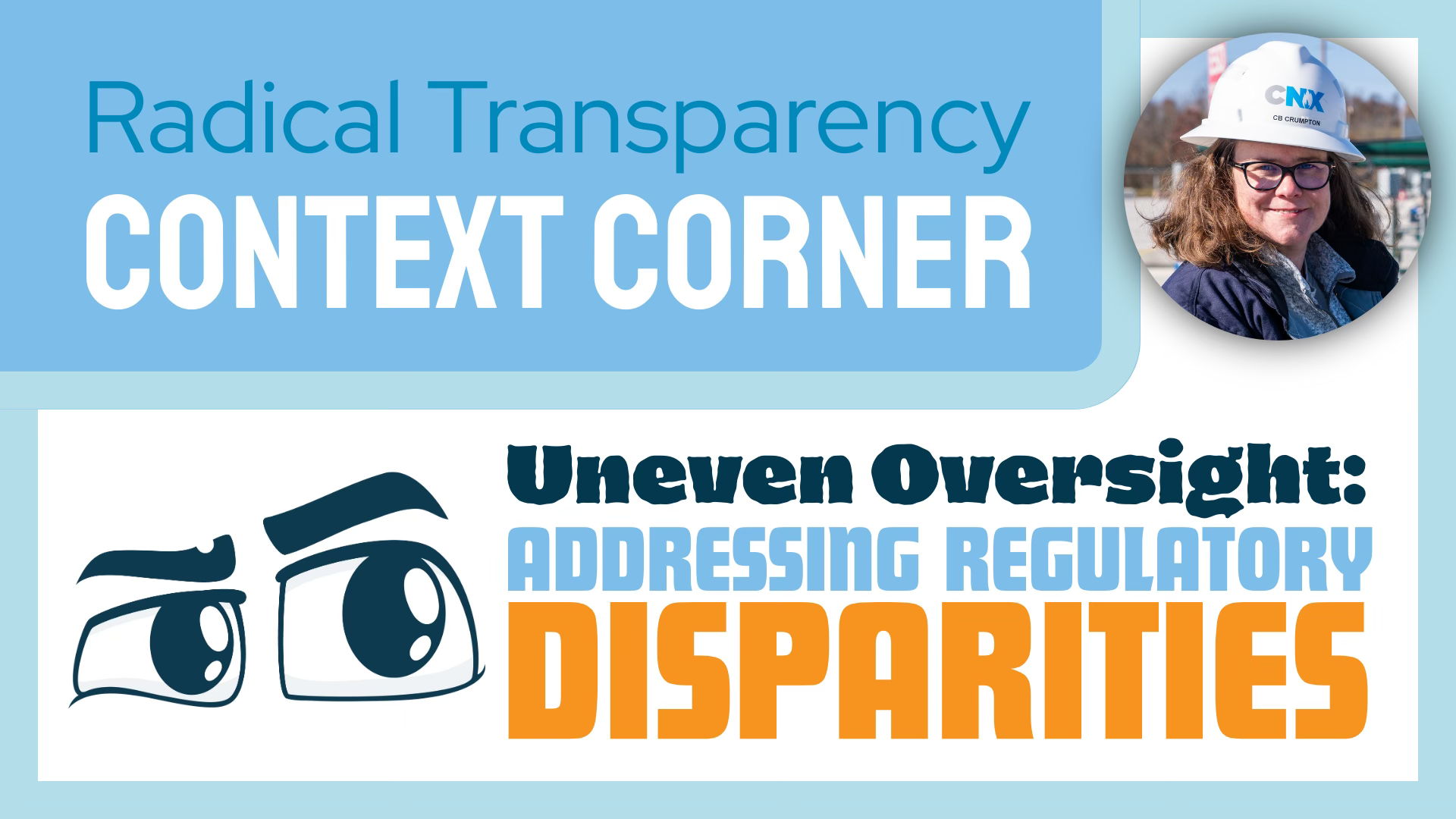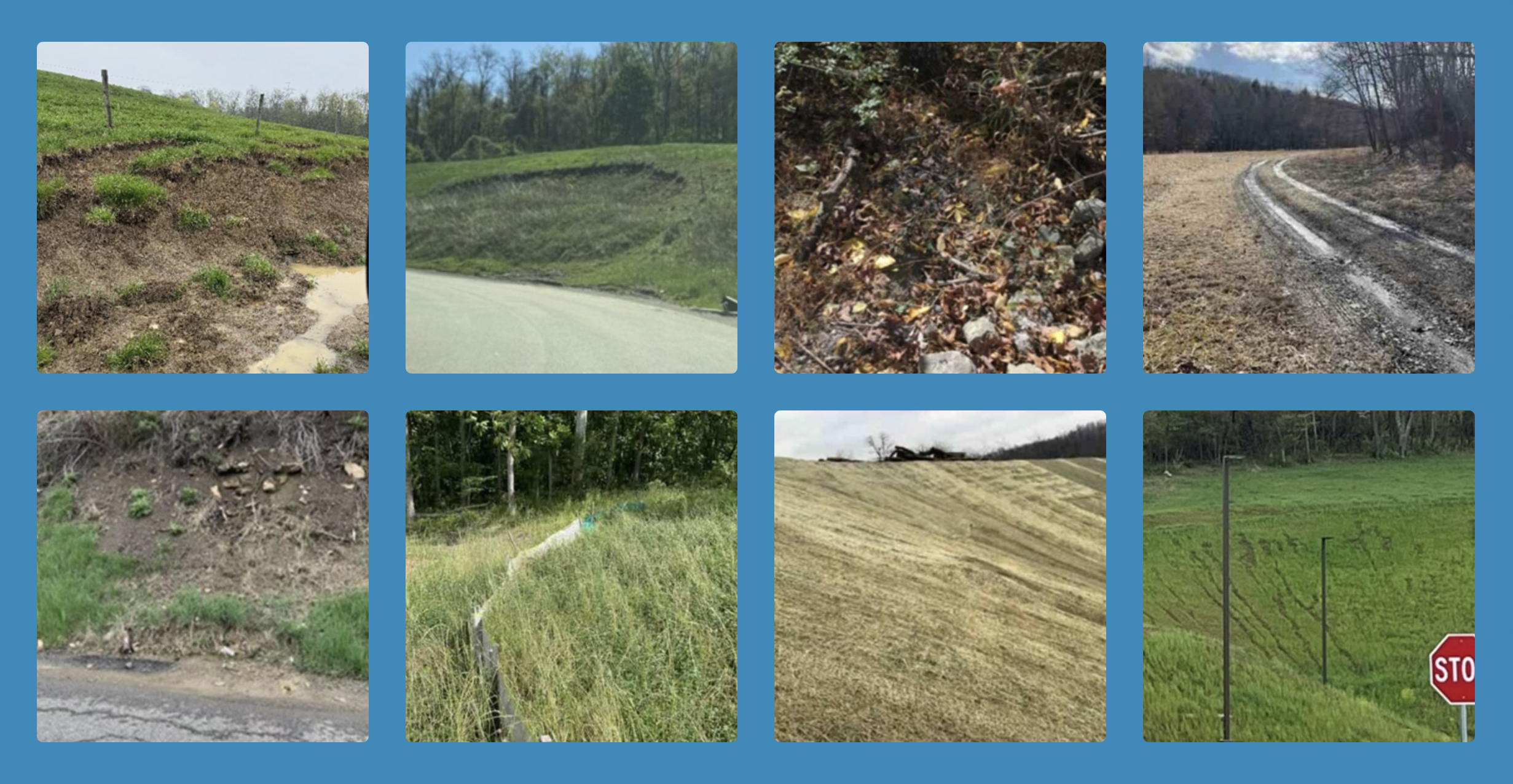Uneven Oversight: Addressing Regulatory Disparities
Context Corner Edition 14
July 17, 2025

By Carrie Crumpton, CNX Vice President of Environmental Strategy
Misappropriated regulatory attention often leads to excessive scrutiny of some industries, while others with similar environmental impacts go largely unsupervised. It’s like a sports referee only watching one team for fouls and ignoring the other team. This imbalance can result from political influence, public perception, outdated regulatory frameworks, agency coordination failures, and other economic priorities.
For example, the energy sector often faces stringent regulations due to its high visibility and unwarranted public perception—shaped by incidents, media portrayal, and limited understanding of industry safety and technological advancements. Meanwhile, sectors such as agriculture and heavy highway construction, which contribute significantly to environmental degradation through practices like deforestation, water pollution, and waste generation, may receive less regulatory oversight and attention. This disparity weakens environmental protection efforts and creates an uneven playing field, where some industries bear a disproportionate share of compliance costs while others operate with relative impunity. A more balanced regulatory approach is needed to hold all industries accountable for their environmental footprints.
While vital to modern society and economic growth, agriculture and heavy highway construction both also have significant environmental impacts. Agriculture contributes to deforestation, soil degradation, and water pollution from fertilizers and pesticides. Highway construction disrupts local ecosystems and hydrology, causes soil erosion, alters water runoff patterns, and increases air and water pollution from construction activities and vehicle emissions. These impacts highlight the need for more sustainable practices and balanced regulatory oversight.
A common misconception is that industries such as agriculture, heavy highway construction, and transportation require less regulation than natural gas due to their perceived lower or more diffuse impacts. Balanced, comprehensive regulatory oversight across all sectors is essential for effective environmental protection.
This disparity is rarely highlighted.
The oil and gas industry is often unfairly depicted as a monolith, overlooking efforts and advancements by many operators to reduce their environmental footprint. Such portrayals obscure the industry's contributions to cleaner energy solutions and its ongoing commitment to environmental improvement.
Technological advancements have led to substantial reductions in the industry’s overall environmental footprint and pollution potential, while also improving overall efficiency. These gains are often overshadowed by generalized critiques that ignore differences among operators. A small number of irresponsible producers can skew public and regulatory perception, while responsible ones are overlooked. This lack of nuance undermines the industry’s progress and its role in the transition to cleaner energy sources. This happens through:
- Negative Framing: Some media outlets emphasize the environmental and health risks associated with natural gas, such as methane leaks and isolated water contamination claims, without equally discussing the role natural gas has played in reducing carbon emissions compared to other energy sources.
- Selective Reporting: Reports focus on accidents and spills related to natural gas extraction and transportation, creating a perception that these incidents are more common than they actually are.
- Activist Influence: Coverage influenced by environmental activists portrays natural gas as entirely harmful, often ignoring the inherent benefits of this energy source and the advancements in technology and regulations that mitigate its impact.
- Alarmist Tone: Some articles adopt an alarmist tone, highlighting worst-case scenarios and potential disasters related to natural gas infrastructure.
Highlighting regulatory oversight disparities amid biased media coverage is challenging. However, CNX is committed to transparent data sharing to advocate for an industry vital to both economic and environmental sustainability.

Visit https://www.cnx.com/sustainability-radical-transparency/environment/compliance-process-and-violations/ to see which of these are from a natural gas facility, and which photos/locations received an Erosion & Sedimentation violation. Do you think your perception of natural gas activity influenced your opinion of what constitutes a violation? Do you think there is potential for misplaced regulatory (or media) attention?
Latest Context Corner:



